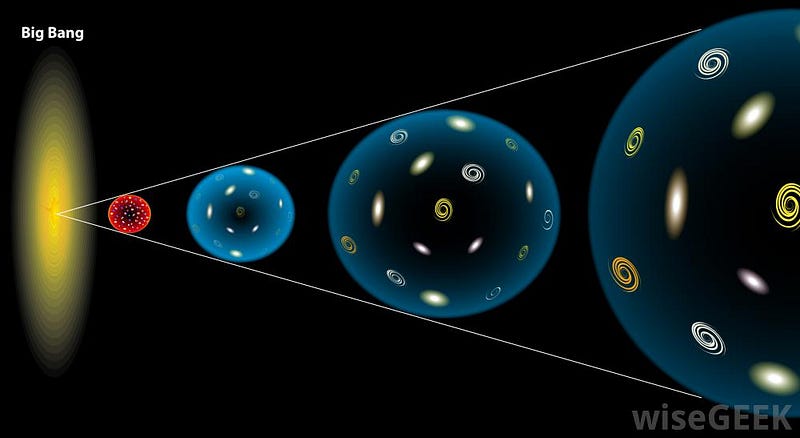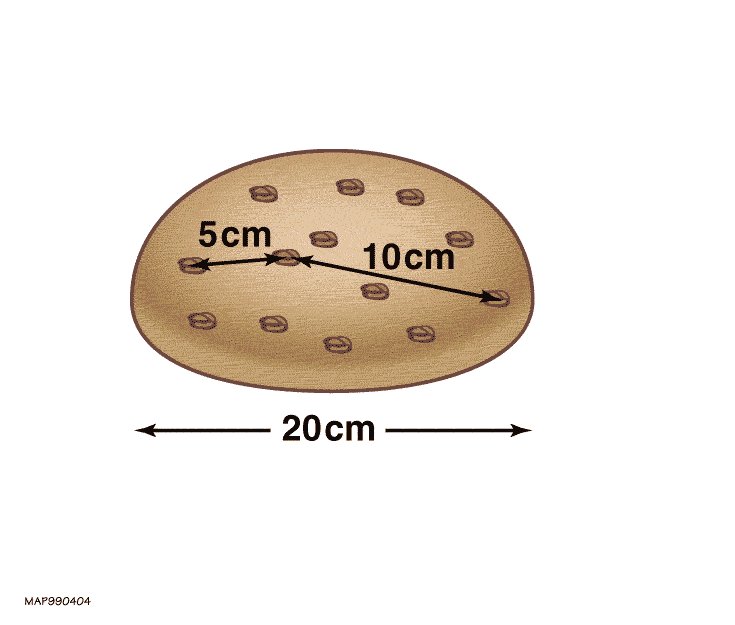If the Universe is expanding, why are galaxies still merging?
The greatest cosmic battle — between gravity and expansion — has been going on for billions of years. Who will win?
“We can lick gravity, but sometimes the paperwork is overwhelming.”
-Wernher von Braun
When you look out at the Universe beyond our galaxy, it’s not hard to find that the Milky Way isn’t alone, but is one of many hundreds of billions out there. And as we’ve come to survey the Universe, we’ve discovered that these galaxies are neither uniformly distributed throughout space, nor are they randomly located, but rather they’re clumped and clustered together.
Here in our own little corner of the Universe, we have our local group, dominated by Andromeda and the Milky Way, with maybe 40-or-so much smaller galaxies and a few thousand globular clusters all bound together. Eventually, at some point a few billion years in the future, our galaxy will merge with Andromeda, and a few tens of billions of years after that, the last of the remaining holdouts will be cannibalized as well. The end result will be a single giant elliptical galaxy made out of all the members of our local group currently bound together.

Other places in space will have their own future fates: the nearby (and comparable to our own, in terms of mass) M81 group will form its own giant elliptical galaxy with a mass of around one trillion Suns, while the more distant Virgo Cluster — containing more than 1,000 large galaxies — will eventually form a giant elliptical galaxy of over a quadrillion times the mass of our Sun.
Yet the most massive of these clumps, generally connected tenuously to one another only by small groups or individual galaxies between them and separated by tremendous voids, are not expected to merge together and form ultramassive superstructures much larger than this.

Why won’t this happen? Why won’t the relatively nearby M81 group — just 11 million light-years (or so) distant — merge with us? Why won’t the very massive Virgo Cluster, some 50-to-60 million light-years away, eventually pull us into it? And why won’t the even more massive clusters-and-superclusters in the Universe merge together?
After all, gravity might be the weakest of the four fundamental forces, but it’s always attractive, and with some 10^80 protons, neutrons and electrons in the Universe (not to mention dark matter), wouldn’t gravity eventually cause all of this matter to accelerate towards each other?
Believe it or not, the answer is no, and to really understand why, we have to go all the way back to the Big Bang!

You see, if you picture the way the Universe is today — with galaxies separated by millions of light-years and with the complex, web-like structure we presently have — you must realize that it wasn’t always this way. In the past, compared to today, the Universe was:
- more uniform and less clumpy,
- denser,
- hotter, and
- expanding more rapidly than it is today!
It’s something that’s easy to forget, but if we go back some 13.8 billion years, there were no stars or galaxies in the Universe at all; it was simply full of matter and radiation, and expanding very rapidly.

Now, you can imagine that if the Universe started out expanding but was full of matter and energy — which is what the Big Bang Theory tells us — that you’re going to have two different things fighting one another. On the one hand, there’s the initial expansion, causing all the matter and radiation to recede from all the other matter and radiation, speeding away like raisins in a loaf of baking bread.

But on the other hand, there’s gravitation, attracting all of this matter and radiation (and anything else with energy) towards one another.
In this great cosmic battle between speeding away into isolation and attracting together, which one will win? Believe it or not, at varying levels, everything wins and everything loses.

There are regions of space where the density is just slightly higher than average to start out, and because of the nature of gravity, these regions preferentially attract more and more matter to them. Over time, stars, galaxies, and (in the largest of these overdensities) clusters of galaxies form, stealing matter-and-energy from nearby underdense regions.
The greatest overdensities on the smallest scales can begin to form stars in just tens of millions of years, while smaller overdensities and larger scales take longer amounts of time. If we scale out the expansion of the Universe and just track density, we see that, over time, a web-like structure begins to form.
And on small scales, you have places where gravity wins, defeating the initial expansion and leading to galaxies, groups and clusters of galaxies, some containing the mass of many thousands of Milky Way-sized galaxies.
But on larger scales, there simply aren’t big enough overdensities to defeat the expansion of the Universe, particularly once we throw dark energy into the mix.

The discovery of dark energy in our Universe tells us that whatever structures are not already gravitationally bound together now never will be; they will continue to expand away. But just because gravity has already won in a region of space doesn’t mean that everything has already merged together and reached its final state!
In our local group, there are still dozens of galaxies that are all gravitationally bound to us, but until they collide-and-merge, they’ll remain separate galaxies. In a larger, more diffuse structure like the Virgo cluster, it could take somewhere around 40 billion years — multiple times the present age of the Universe — for all the galaxies contained therein to merge together. And as we look farther and farther away, we’re looking back in time, at mergers that happened when the Universe was younger (and mergers were more common).
The Universe is still expanding, make no mistake about it, and by understanding our Universe, including normal matter, dark matter and dark energy, we can tell to incredible precision which structures are bound to one another and which ones are unbound. But that doesn’t mean that mergers are complete; depending on the mass distribution of these gravitationally bound structures, mergers should keep happening for billions or — for the largest ones — many tens of billions of years.
On small scales, gravity will win, while on larger ones, the expansion will win. The far future fate of everything will be an isolated clump of matter where gravity has won locally, while everything else recedes away towards infinity with the relentless expansion of the Universe. But the merger process isn’t instantaneous; it takes time to complete, and not nearly enough has past since our Universe sprang into existence. In the meanwhile, we’ve got mergers happening right now everywhere we look, and some amazing ones in our own future coming up!
For Nathalie Roy, who asked this wonderful question.





